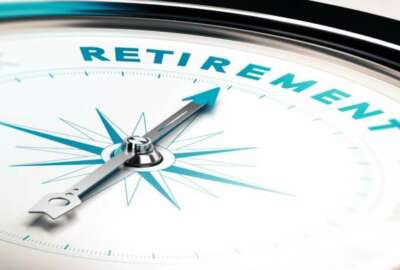
Grandpa, what’s a retirement plan?
If you're a government worker or retiree, odds are you are dreading the day when your grandson or granddaughter asks you about the good old days, when folks had...
When today’s toddlers age out and start looking for a job, what will you, as their retired civil service parents or grandparents, say when they ask the dreaded question? You know. The one every parent or grandparent fears, which is: Do you have a pension? What do they look like? What are they for? Will I have one? When did yours stop working? Do you miss it? And why do you and grandma live in a trailer in our backyard?
When that day comes, and it may, you must first remind yourself that, in retrospect, these really were the good old days. Put aside climate change, government gridlock, political fratricide and North Korea. Then the rest, as they say, is history. At least your version of it.
I’ve already had the P-word conversation with my grown children. Although they’ve worked long and hard, only one of them will have an employer-sponsored pension when she retires. At that isn’t chiseled in stone. Her brothers and sister will have to rely on Social Security and whatever they put aside in their company 401k plan (which DOES NOT have an employer match). That, plus any savings they have, which, if they are like one-third of all Americans, is zero.
Up until now, federal and postal workers and retirees have been spared giving tough answers to the “what’s a pension” question. As of today, right this minute, they have what is arguably the best retirement plans, CSRS and FERS, and the best 401k plan (the Thrift Savings Plan) in the nation.
Most American workers do not have a pension plan. Many companies that once offered them have bailed out. Of those that do still offer pension or retirement plans, the overwhelming majority do not provide any inflation protection in the form of regular cost-of-living adjustments. If you retire on $1,000 a month in 2017, you will still be getting $1,000 per month in 10, 20 or 30 years, regardless of what inflation does to their benefit. Most current workers who have 401k plans at the office don’t get any matching contributions (like Uncle Sam’s 5 percent max for FERS workers). Nothing.
By now, most federal workers and retirees know that their retirement plan is on the chopping block. The Trump administration has proposed eliminating cost-of-living adjustments for workers and retirees under the FERS program, and reduced COLAs in future for CSRS retirees. And increasing FERS employees contributions to the retirement fund by 1 percent a year over each of the next six years. And some other changes too.
Some of the proposals have been made before. In the past, they’ve always gone away. Gotten lost in the political fog in Congress. Or approved by the House but ignored by the Senate. But this time things have a different feel. And this is the first time in a long time that one political party has controlled both the executive and legislative branches of government.
So what are the odds that something, anything, will happen? In yesterday’s Your Turn radio show, we talked with Greg Stanford. He’s legislative director of the Federal Managers Association. FMA and other groups, representing retirees, union members, professional groups and senior executives, are working together to shoot down any attempts to water down the retirement plan. So what are the threats? What does each one mean to you, as a worker and retiree? And what are the odds? How real is this threat? All our Your Turn shows are archived so you can listen to them anytime. To hear yesterday’s, click here:
Nearly Useless Factoid
By Jory Heckman
In 1989, Chamoy Thipyaso, a Thai national, received the world’s longest prison sentence, 141,078 years, for defrauding more than 16,000 investors in a Ponzi scheme. However, she was released after serving eight years.
Source: Wikipedia
Copyright © 2024 Federal News Network. All rights reserved. This website is not intended for users located within the European Economic Area.
Mike Causey is senior correspondent for Federal News Network and writes his daily Federal Report column on federal employees’ pay, benefits and retirement.
Follow @mcauseyWFED
Related Stories





